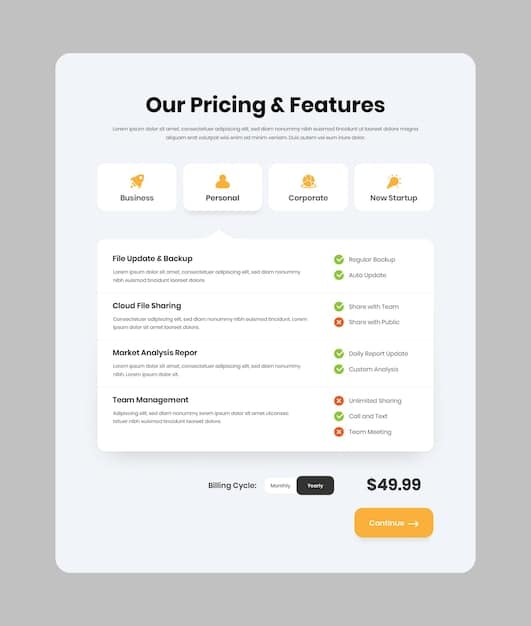Unlock Savings: The Power of Price Matching in Retail

Price matching is a powerful strategy that allows consumers to get the lowest possible price on a product by requesting a retailer to match or beat a competitor’s advertised price, ultimately leading to significant savings.
Discover the power of price matching: how to get retailers to beat competitors’ prices and save you money, turning you into a savvy shopper who always gets the best deal available.
Understanding the Basics of Price Matching
Price matching is a consumer-friendly policy where retailers agree to match a lower price offered by a competitor. It’s designed to attract customers and ensure they choose to shop at their store, even if a rival offers a better deal initially. By understanding the fundamentals of price matching, you can leverage this policy to your advantage.
The concept is straightforward: if you find the same product being sold at a lower price somewhere else, the retailer with a price-matching policy will adjust their price to match or even beat the competitor’s advertised price. This not only saves you money but also ensures you don’t have to compromise on convenience or preferred shopping experience.
Eligibility for Price Matching
Not all products are eligible for price matching, and the specific rules vary from retailer to retailer. Generally, the product must be identical in terms of brand, model, and color. It must also be in stock at both the retailer offering the price match and the competitor.
Common Exclusions
- Limited-time offers or flash sales
- Clearance items or closeout deals
- Prices from unauthorized dealers or auction sites
- Pricing errors or typos
Be aware of these exclusions to avoid disappointment when you try to claim a price match. Always check the retailer’s specific policy on their website or ask a customer service representative for clarification.
In conclusion, understanding the basics of price matching, including eligibility and common exclusions, is the first step to becoming a savvy shopper who maximizes savings. Knowing these details will help you navigate the process smoothly and ensure you get the best possible deal.
Identifying Retailers with Price Matching Policies
Many major retailers offer price matching, but it’s essential to know which ones do and what their specific policies entail. Identifying these retailers is your first step to leveraging price matching effectively. Understanding their policies will save you time and effort, and ensure you get the best deals.
Researching retailers with price-matching policies can be done online or by visiting their physical stores. Their websites usually have a dedicated page outlining the terms and conditions. Familiarize yourself with these policies to understand the requirements and limitations.

Popular Retailers Offering Price Matching
Several well-known retailers have price matching programs in place. Some notable examples include:
- Best Buy
- Target
- Walmart
- Home Depot
These retailers aim to provide competitive prices and attract customers who are looking for the best possible deals. However, remember that each retailer has its own specific rules and exclusions.
Identifying retailers with price matching policies is crucial for maximizing your savings potential. By knowing where to look and understanding the terms, you can confidently pursue price matches and ensure you’re always getting the best deal available.
How to Successfully Request a Price Match
Requesting a price match involves a few key steps to ensure a smooth and successful process. Knowing how to properly request a price match can significantly increase your chances of getting the lower price you’re seeking. Follow these guidelines to make the most of price-matching opportunities.
Before initiating the price match, gather all the necessary documentation to support your claim. This typically includes proof of the competitor’s lower price, such as an advertisement, website link, or a screenshot. Having this information readily available will streamline the request process.
Steps to Request a Price Match
- Gather proof of the competitor’s lower price.
- Check that the product is identical and in stock at both retailers.
- Review the retailer’s price-matching policy for any specific requirements.
Tips for a Smooth Process
To ensure a hassle-free experience, be polite and patient when dealing with customer service representatives. Clearly explain why you believe you are eligible for a price match and provide all the necessary information. Remember, a positive attitude can go a long way.
- Be polite and patient with customer service representatives.
- Clearly explain your eligibility for a price match.
- Provide all necessary information upfront.
In summary, successfully requesting a price match requires preparation, clear communication, and a thorough understanding of the retailer’s policy. By following these steps, you can confidently pursue price matches and secure the best possible prices on your purchases.
Navigating Common Price Matching Challenges
While price matching can be a great way to save money, it’s not always straightforward. There are common challenges you might encounter, such as dealing with uncooperative retailers or navigating complex policy terms. Understanding these issues and knowing how to address them can make the process smoother and more rewarding.
One of the primary challenges is dealing with retailers who are hesitant to honor their price-matching policies. This could be due to misunderstandings of the policy, unclear guidelines, or simply a reluctance to lower their prices. In such cases, it’s essential to remain calm, persistent, and well-informed.

Dealing with Uncooperative Retailers
If a retailer is initially unwilling to honor a price match, there are several strategies you can employ:
- Politely reiterate your understanding of their policy.
- Ask to speak to a supervisor or manager.
- Provide additional evidence or clarification if needed.
Remember, sometimes a simple misunderstanding can be resolved with clear and respectful communication. If all else fails, you might consider taking your business to a more accommodating retailer.
In conclusion, navigating common price-matching challenges requires patience, persistence, and a thorough understanding of the retailer’s policies. By addressing these issues proactively and maintaining a positive attitude, you can often overcome obstacles and secure the savings you deserve.
Maximizing Savings: Combining Price Matching with Other Strategies
To truly maximize your savings, consider combining price matching with other smart shopping strategies. Stacking discounts, using coupons, and taking advantage of loyalty programs can lead to even greater reductions in price. By combining these approaches, you can significantly lower your overall shopping expenses.
One effective strategy is to combine price matching with the use of coupons. If you have a coupon for a specific product, you can first request a price match to bring the price down to the lowest available. Then, apply the coupon for an additional discount. This can result in substantial savings.
Combining Strategies for Maximum Impact
Explore how to combine price matching with:
- Coupons and promo codes
- Loyalty programs and rewards
- Cash-back apps and browser extensions
Each of these strategies can complement price matching and further reduce your out-of-pocket expenses.
Maximizing savings involves creativity and a willingness to explore different options. By combining price matching with other smart shopping strategies, you can significantly reduce your overall expenses and make your budget stretch further.
The Ethical Considerations of Price Matching
While price matching is a legitimate strategy to save money, it’s essential to consider the ethical implications. Being a responsible and ethical consumer ensures that the practice remains fair for both shoppers and retailers. Understanding these considerations helps maintain a positive and sustainable shopping environment.
One of the primary ethical considerations is to avoid abusing price-matching policies. This includes providing false information, misrepresenting competitor prices, or attempting to take advantage of loopholes in the policy. Such actions can undermine the integrity of the system and lead to stricter rules for everyone.
Being a Responsible Consumer
Key ethical considerations include:
- Providing accurate information and avoiding misrepresentation.
- Respecting the retailer’s terms and conditions.
- Avoiding excessive or abusive price-matching requests.
By adhering to these principles, you contribute to a fair and honest shopping environment.
The ethical considerations of price matching are crucial for maintaining a healthy and sustainable shopping ecosystem. By being a responsible consumer, you can enjoy the benefits of price matching while also supporting fair business practices and ensuring that these policies remain available for everyone.
| Key Point | Brief Description |
|---|---|
| 💰 Understanding Price Matching | Learn the basics of how price matching works and its benefits. |
| 🏢 Identifying Retailers | Find out which retailers offer price matching policies. |
| ✅ Requesting a Price Match | Follow the steps to successfully request a price match. |
| 🤝 Ethical Considerations | Understand the ethical aspects to avoid abusing price matching. |
Frequently Asked Questions
▼
Price matching is a policy where retailers agree to match a lower price offered by a competitor for the same product. This ensures you get the best deal without having to shop at multiple stores.
▼
Many major retailers like Best Buy, Target, and Walmart offer price matching policies. Check their websites or ask customer service for specific details on their programs.
▼
You typically need proof of the competitor’s lower price, such as an advertisement, website link, or screenshot. Make sure the product is identical in terms of brand and model.
▼
Yes, common exclusions include limited-time offers, clearance items, prices from unauthorized dealers, and pricing errors. Always review the retailer’s specific policy beforehand.
▼
In some cases, yes. You can first request a price match and then apply any available coupons for additional savings, but this depends on the retailer’s specific rules.
Conclusion
Price matching is a powerful tool for savvy shoppers to leverage, ensuring they always get the best available price. By understanding the policies, identifying participating retailers, and following ethical guidelines, consumers can maximize their savings and make their budget go further. Embrace the power of price matching and transform your shopping experience today.





